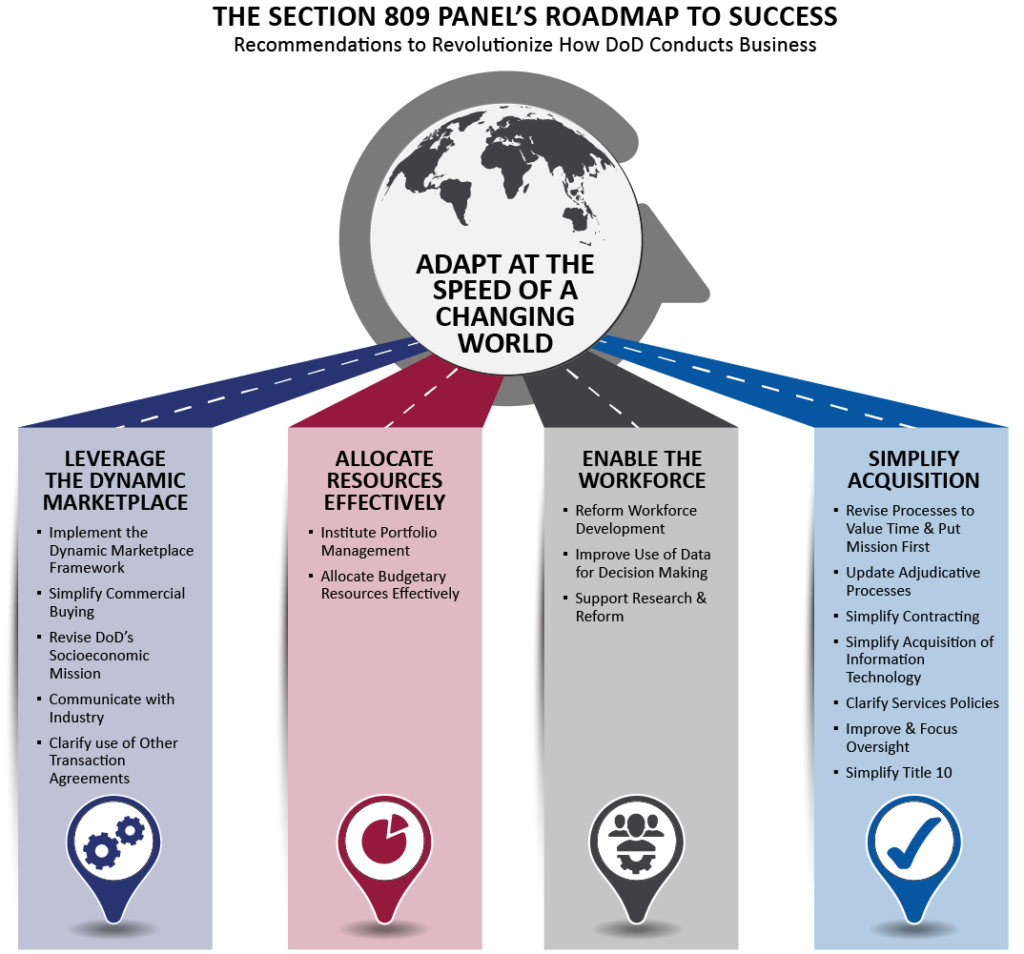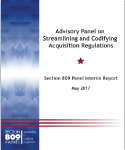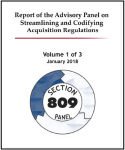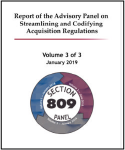Section 809 Panel
The Advisory Panel on Streamlining and Codifying Acquisition Regulations (Section 809 Panel) was created in Section 809 of the FY 2016 National Defense Authorization Act (Public Law 114-92). The panel consisted of 16 members required to be recognized experts in acquisition and procurement policy with diverse experiences from the public and private sectors. The panel was charged to deliver recommendations that could transform the defense acquisition system to meet the threats and demands of the 21st century.
From August 2016 to its conclusion in July 2019, the panel released five publications: an interim report, a final report in three volumes, and a roadmap organizing all 98 recommendations within 4 founding principles. Together, these 98 recommendations chart a path for both evolutionary and revolutionary change in the defense acquisition system.
As of July 2019, 15 recommendations had been implemented by Congress or the Department of Defense. Another 12 recommendations were pending in the 2019 legislative cycle. For details, see the Implementation Tracker located in the tab "Promotion & Outreach Products."
Note that each recommendation is accompanied by draft implementation language. This language can be found in the main volumes but is not included in the individual recommendation files.






